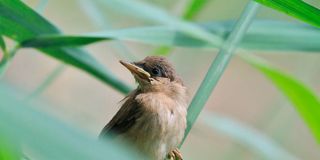Premium
Kenya drops to 2nd in Africa in number of bird species

What you need to know:
- Tanzania beat Kenya for the first time ever in the decade that Kenya has been participating in the GBD.
- Tanzania ranked sixth with 772 species and placed number one in Africa while Kenya took the ninth position with 739 species and placed second in Africa.
- The South American giants – Columbia (1402 species), Peru (1328), Brazil (1240), Ecuador (1130) and Bolivia 9824) – took the first five spots.
The Global Big Day on October 12 saw hundreds of Kenyan birders compete for the most species of birds seen in 24 hours globally. While some serious birders started at the stroke of midnight to log in the nocturnals like the owls on the eBird app, the lazy ones like me chose to spend a few daylight hours afloat on Lake Naivasha’s beautiful blue waters, seated on the plush leather seats of Angel’s Ark, the luxury pontoon – a novel experience on the freshwater lake circled by the massifs of the Mau range, Eburru, Aberdares and the walls of the Rift.
On this fine morning, the African fish eagle stole the show, renting the air with that unmistakable call and swoop from the highest acacia to snatch a fish with outstretched talons. In three hours, we counted 25 of the regal raptor making Lake Naivasha a hotspot for this handsome bird.
As a filler, the number of this fish-eating raptor plummeted from over 200 to fewer than a hundred in the 1970s because of the dramatic drop in the lake level and the chemicals pouring in from the flower farms. But since 2010 numbers have increased as the lake has risen phenomenally and joined its little sibling, Lake Oloiden, to make one big lake with more fish in it.
While we logged in only 23 species, the birders’ whatsapp group was abuzz with one bird never seen in Kenya – the Bamboo warbler.
It’s no understatement to say that you really have to know your birds to be able to identify such a non-descript bird like the Bamboo warbler. And so it was that Victor Ikawa was feted in Kenya’s birding community as a legend for the unique sighting of the bird seen for the first time in Kenya on an auspicious day like the GBD.

“Fewer than 50 people have seen it in the world,” he reported from Katotoi Hills in Busia county near the shores of Lake Victoria, putting this little-known destination on the bird map.
“Oluoko Ouma (another birder) first heard of the bird four months ago but did not see it,” continued Ikawa.
On the previous GBD, Oluoko did his sighting in the Democratic Republic of Congo, putting the country on the eBird map. The DRC with its Congo forest should be in the top five like the South American giants sharing the Amazon forest, but it is not because there aren’t many birders out there. Yet DRC’s most famous and rarely seen bird is the Congolese peacock living in the dense Congo forest, which was seen by James Chapin in 1913 in the headdress of a local in Congo. He realised the feather was from a bird he had never seen.
He then saw the feathers in 1936 in the Royal Museum of Central Africa in Belgium wrongly labelled as feathers of an Indian peacock. To date, very few outsiders have seen Africa’s indigenous peacock.
Going by Ikawa’s account, they could have easily missed the Bamboo warbler. “Oluoko had recorded a call which had the birders divided. Some thought the recorded call was that of an insect while others like myself were convinced it was a bird.
While Ikawa and Oluoko braved the wooded hills, Mary Kimani with the Kenya Women Birders chose to cycle in Hell’s Gate National Park. “The buffaloes kept me on my toes and I had to cycle away fast whenever a herd started coming my way. But l was happy to see the critically endangered white-headed vulture and a long-tailed fiscal shrike.”
Tanzania beats Kenya
Two days later, on the final count, Kenyan birders woke to a shocking result on the eBird site.
Tanzania beat Kenya for the first time ever in the decade that Kenya has been participating in the GBD. Tanzania ranked sixth with 772 species and placed number one in Africa while Kenya took the ninth position with 739 species and placed second in Africa. The South American giants – Columbia (1402 species), Peru (1328), Brazil (1240), Ecuador (1130) and Bolivia 9824) – took the first five spots with India coming in eighth position with 748 species and Costa Rica in tenth with 729. Worldwide, 7289 species were logged in.
In all fairness Kenya is much smaller than Tanzania and no birders took part from north and north-eastern Kenya.
“But Kenya is a great birding destination,” states Zarek Cockar, a gold-rated tour guide. “The fact that we are a relatively small country with the second highest number of bird species on the continent and second only to the DRC (four times the size of Kenya with a handful more species than Kenya), is a good thing.
“We have a good network of roads and protected parks, high diversity of bird species, lots of places to stay, good quality local bird guides who can take you around and show you those species, a decent selection of published field guides, and what’s more, it is very easy to see lots of species any time of the year.”
rupitheafricantrotter.wordpress.com





